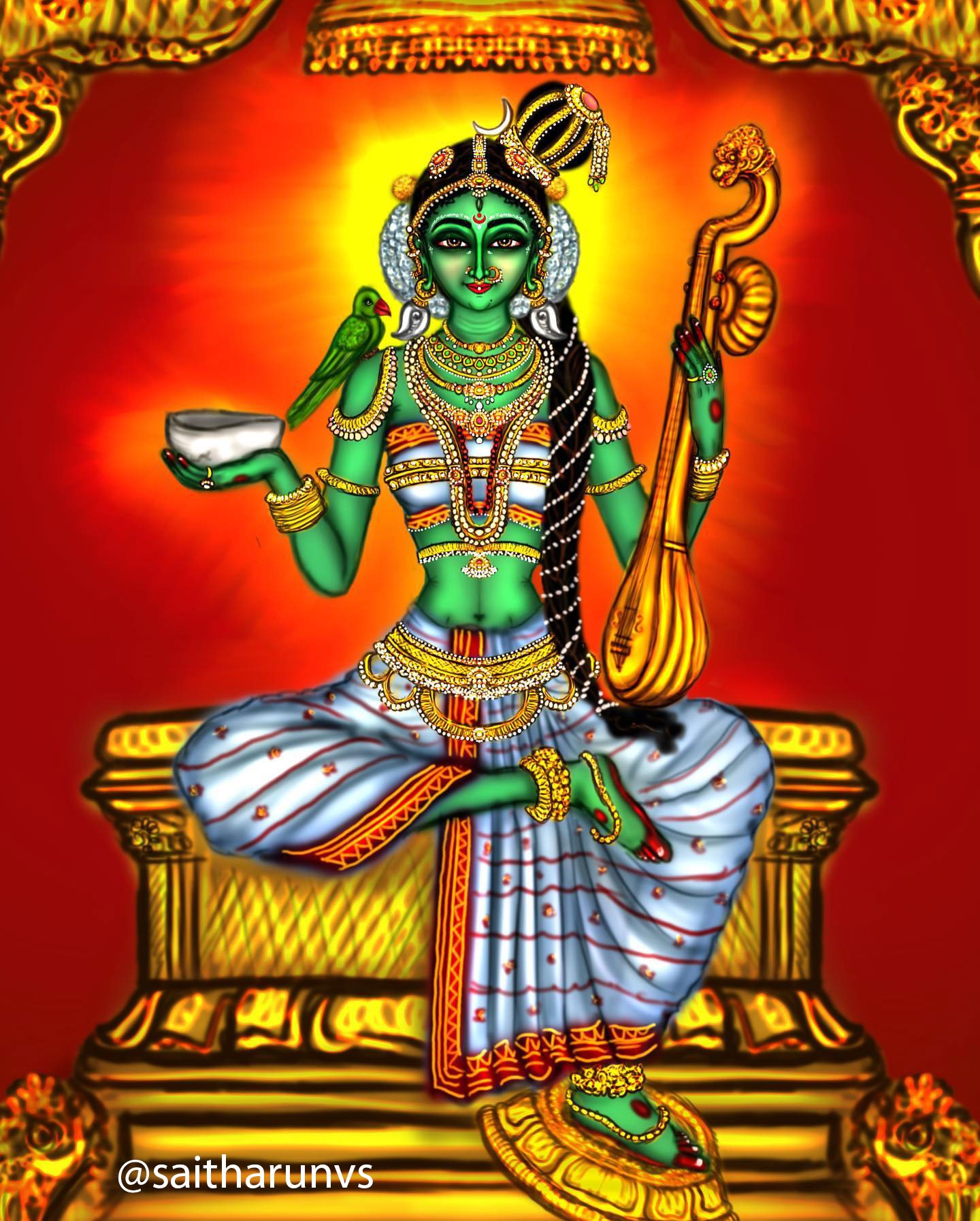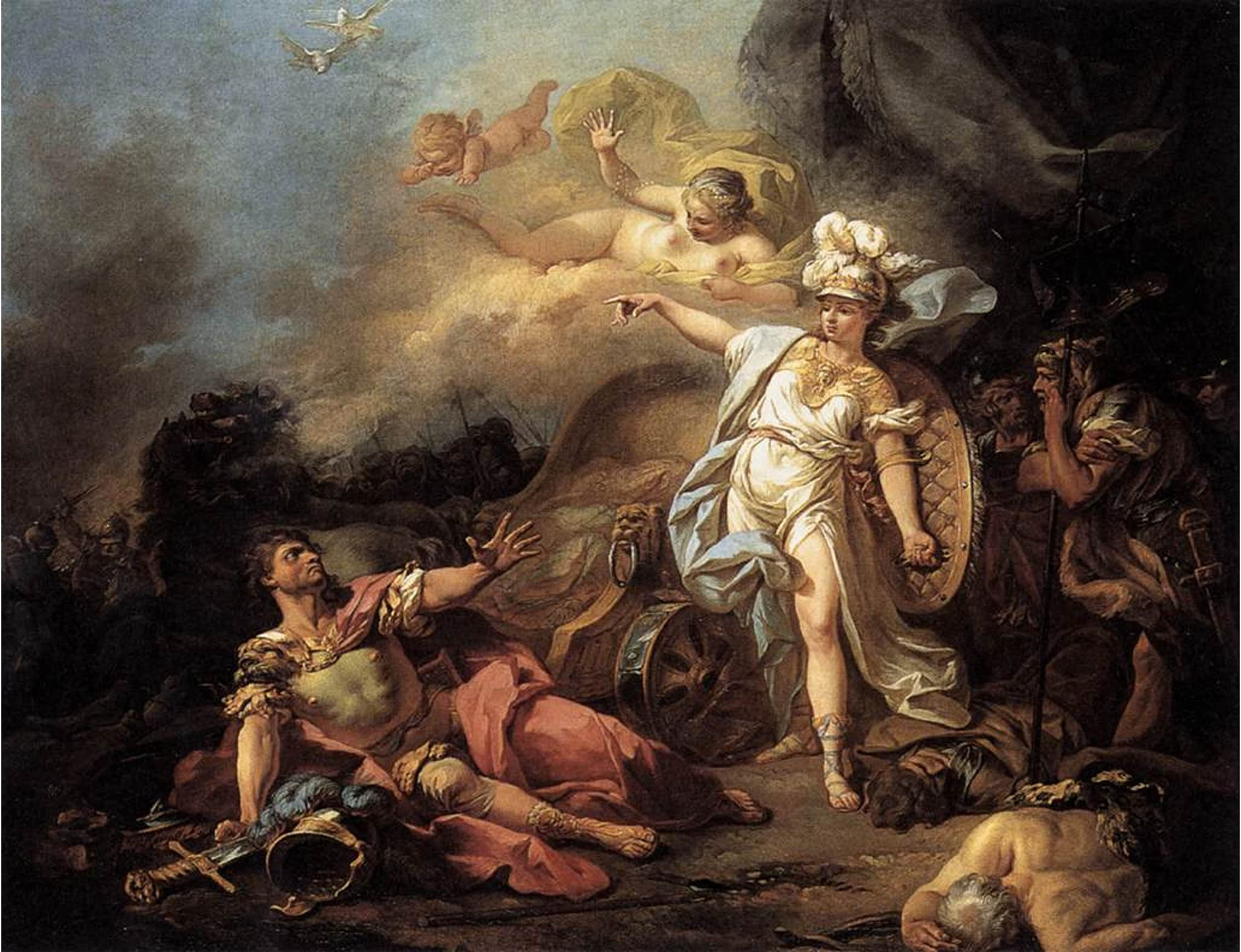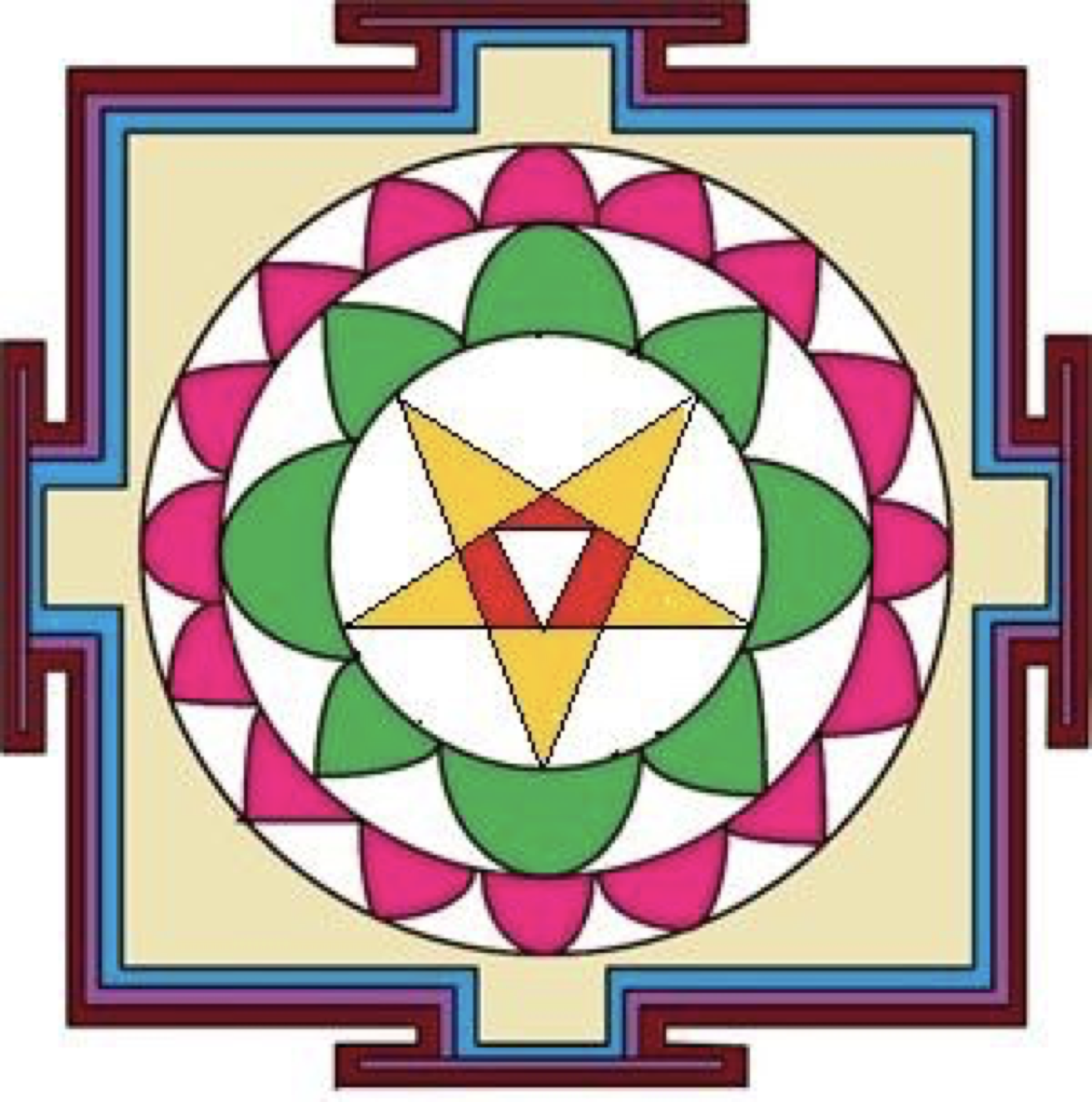- Edited

LAGHUŚYĀMĀ
Aṅga Devata of Rāja Śyāmalā
Laghuśyāmā appears to be very similar to the Mahāvidyā Mataṅgi. She provides the inspiration and creative urge, protection and the ultimate knowledge which transcends the duality of our perceptions leading us to liberation. She represents the death instinct; and on the other hand, the instinct of kāma, or desire. She represents both the raging bonfire of desire and the cool detachment of the burial ground. She is a unity of opposites. She’s both nivṛti mārga and pravṛti mārga. She gives both enjoyment and creative drive and death and liberation. Her yantra is a clear representation of this principle - containing both ugra deities (64 yoginis and matrikas) and the 5 arrows of Kāmadeva and Apsaras.
Her proximity to Rajaśyāmalā is supported by the following:
- Her abode is in Svādhiṣṭhāna cakra, next to Mūlādhāra (abode of Parā),
- Her dress is stained by the blood of her first period, denoting her transitioning to womanhood (parā to paśyanti, also pointing to her being in the yoni), and finally
- She’s described as wearing conch shell earrings, which symbolize her proximity to Parā sound (next to her ear).
VĀHANA/VEHICLE:
Chariot
BODY LOCATION:
Genital Center: The yoni represents both the entrance and an exit. On the path pravṛti (creation), She’s iccha śakti, the creative jolt and on path of nivṛti she’s the ultimate destroyer, killing one’s ego and helping one merge with the Divine.
LEVEL OF SPEECH:
Paśyanti: When a tendency toward manifestation arises in parāvāc, there appears paśyantī, which is, properly called, the First stage of Speech. It is characterized by a desire (icchāśakti) for the differentiation of speech into phonemes, words, and sentences. Paśyantī has for its nature the desire to know the object which is to be known. It brings about the energies of cognition and action.
She’s described as wearing a dress stained by the drops from her first period. This points to the first movement in the creative process to differentiation. Prior to that she was an “unblemished” virgin, Parā.




